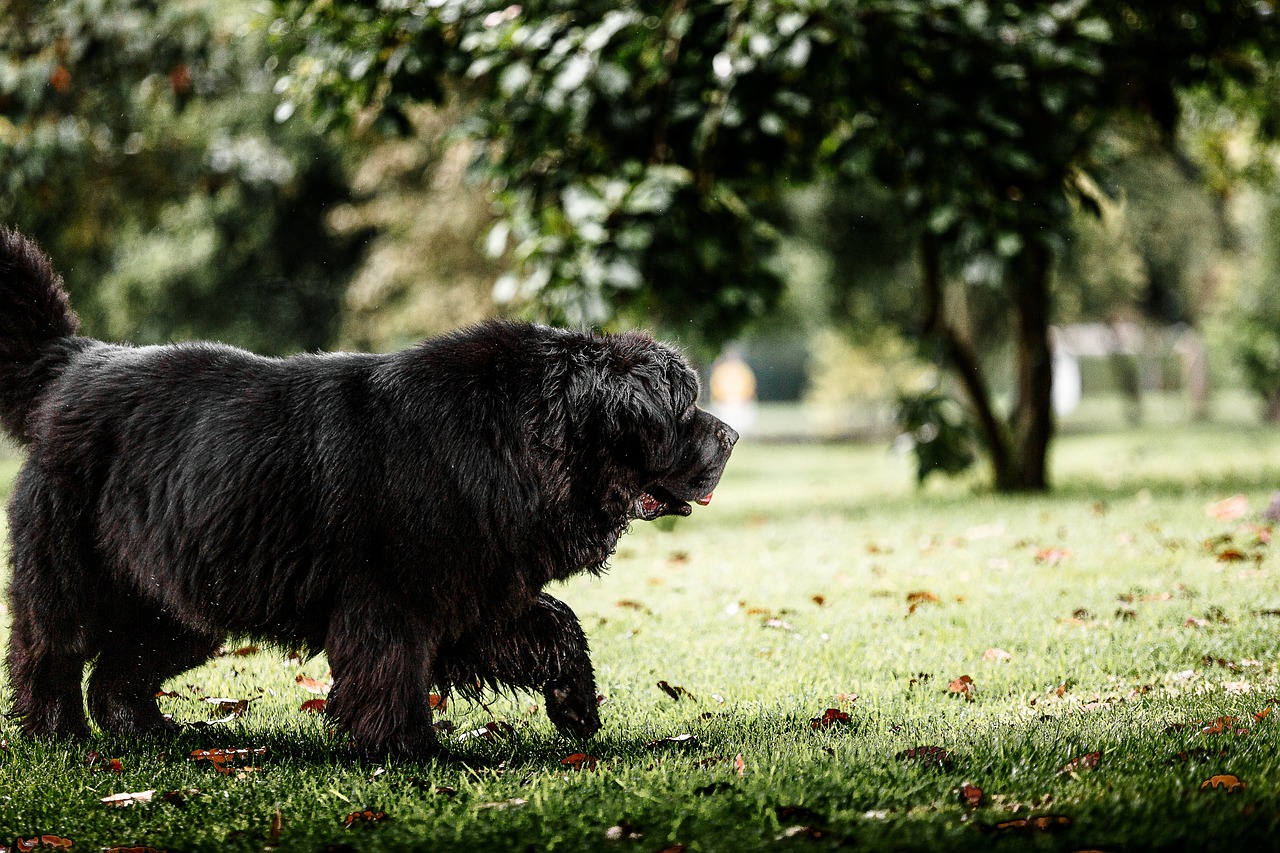Tips for Addressing Excessive Barking in Dogs
Excessive barking in dogs can be a significant challenge for pet owners, often leading to frustration and strained relationships. Understanding that barking is a natural form of communication for dogs is the first step in addressing this behavior. However, when barking becomes excessive, it can disrupt not only the household but also the neighborhood. In this article, we will explore effective strategies to manage and reduce excessive barking, ensuring a harmonious relationship between pets and their owners while promoting a peaceful environment.
Identifying the reasons behind your dog's barking is crucial for effective management. Dogs bark for various reasons, and understanding these triggers can help you address the issue more effectively. Common causes of excessive barking include:
- Boredom: Dogs need mental and physical stimulation. A lack of exercise or engaging activities can lead them to bark out of boredom.
- Anxiety: Many dogs bark when they feel anxious or stressed, especially when left alone or exposed to loud noises.
- Territorial Behavior: Dogs are naturally protective of their space. They may bark to alert you of perceived threats or intrusions.
By recognizing these triggers, you can tailor your approach to meet your dog's specific needs, promoting a quieter and more peaceful environment.
Implementing effective training techniques can significantly reduce excessive barking. Training is not just about correcting behavior; it's about teaching your dog what is expected of them. Here are some methods to encourage quieter behavior:
Using rewards to reinforce quiet behavior is an effective training method. Dogs respond well to positive reinforcement, which can include treats, praise, or playtime. When your dog remains quiet in situations that typically trigger barking, reward them immediately. This creates a positive association with being quiet, making it more likely that they will repeat the behavior. Remember, consistency is key. If you reward them for being quiet one day and ignore barking the next, it may confuse them.
Clicker training can be a powerful tool in addressing barking. A clicker is a small device that makes a distinct sound when pressed. To use it effectively, follow these steps:
- Introduce the clicker to your dog by clicking and immediately giving them a treat.
- Wait for your dog to be quiet during a barking trigger, then click and reward them.
- Gradually increase the time they must remain quiet before receiving the click and treat.
This method helps your dog understand that being quiet leads to rewards, reinforcing the desired behavior over time.
Consistency is key in dog training. Establishing a regular training schedule helps dogs learn and adapt to new behaviors effectively. Make sure everyone in the household is on the same page regarding training techniques and commands. If one person allows barking while another discourages it, this inconsistency can lead to confusion and frustration for your dog.
Sometimes, modifying the dog's environment can reduce barking triggers. Consider creating a calmer space for your dog by:
- Providing a cozy bed or crate where they feel secure.
- Using white noise machines or calming music to drown out external sounds that may trigger barking.
- Limiting visual stimuli by using curtains or barriers to block views of passersby.
These adjustments can help minimize stimuli that lead to excessive barking, promoting a more peaceful atmosphere.
Socializing your dog with other pets and people can help reduce anxiety-related barking. A well-adjusted dog is less likely to bark excessively. Socialization exposes your dog to various environments, sounds, and experiences, which can help them feel more comfortable and confident. The benefits of socialization include:
- Improved behavior around other dogs and people.
- Reduced anxiety and fear responses.
- Enhanced ability to cope with new experiences.
Gradual exposure to new environments and experiences can ease a dog's anxiety. Start by introducing your dog to new situations in a controlled manner. For example, take them to a quiet park before visiting a busy one. This gradual introduction allows them to adjust without becoming overwhelmed, reducing the likelihood of barking.
Enrolling your dog in group classes can enhance their social skills. These structured classes provide opportunities for dogs to interact with others in a controlled environment, helping them learn appropriate behaviors. Additionally, group classes can be a fun way for you and your dog to bond while learning new skills together.
Q: How long does it take to train a dog to stop barking excessively?
A: The time it takes varies depending on the dog and the consistency of training. With dedication and the right techniques, you may start to see improvements within a few weeks.
Q: Should I use anti-bark collars?
A: Anti-bark collars can be effective for some dogs, but they should be used as a last resort. It's essential to address the underlying causes of barking first.
Q: Can excessive barking be a sign of a health issue?
A: Yes, if your dog suddenly starts barking excessively, it may indicate discomfort or pain. Consult your veterinarian if you notice any significant changes in behavior.

Understanding the Causes of Barking
Every dog owner has experienced it at some point: the incessant barking that seems to echo through the walls. But why do our furry friends bark so much? Understanding the root causes of excessive barking is vital for any pet owner who seeks to foster a peaceful home. Dogs, much like humans, have their own ways of communicating, and barking is one of their primary forms of expression. It’s essential to delve into the reasons behind this vocalization to effectively address it.
One of the most common triggers for barking is boredom. Just like us, dogs can get restless and frustrated when they lack stimulation. Imagine being stuck in a room with nothing to do; you’d probably start making noise too, right? Dogs need physical and mental engagement to stay happy and healthy. Regular walks, playtime, and interactive toys can keep their minds sharp and bodies active, reducing the likelihood of barking out of sheer boredom.
Anxiety is another significant factor that can lead to excessive barking. Dogs can experience various forms of anxiety, whether it’s separation anxiety when their owners leave or fear of loud noises like thunderstorms or fireworks. When a dog feels anxious, barking becomes a way to cope with their discomfort. For instance, if your dog barks every time you leave the house, it might be expressing its fear of being alone. Recognizing these signs is crucial in helping your dog feel secure and comfortable.
Territorial behavior also plays a pivotal role in why dogs bark. Many dogs are naturally protective of their homes and families. When they sense an intruder or even hear a strange noise outside, their instinct is to bark to alert you and assert their territory. This behavior is perfectly normal, but it can become problematic if it escalates into excessive barking. Understanding your dog’s protective nature can help you manage their responses better.
To sum it up, there are several key reasons why dogs bark:
- Boredom: Lack of physical and mental stimulation.
- Anxiety: Fear of abandonment or loud noises.
- Territorial Behavior: Protecting their home and family.
By identifying these triggers, you can begin to address the underlying issues. It’s essential to observe your dog’s behavior and consider their environment, routine, and interactions. Each dog is unique, and understanding their specific needs is the first step toward reducing excessive barking. With a little patience and the right strategies, you can help your furry friend find their voice—without the constant barking!
- What should I do if my dog barks at everything? Consider providing more exercise and mental stimulation to reduce boredom and anxiety.
- Can training help with excessive barking? Absolutely! Training techniques, especially positive reinforcement, can significantly reduce barking.
- Is it normal for dogs to bark at strangers? Yes, many dogs bark to alert their owners of potential intruders. However, it should be managed to avoid excessive barking.

Training Techniques to Reduce Barking
Excessive barking can be a real challenge for dog owners, but the good news is that there are effective training techniques available to help manage this behavior. Understanding that barking is often a form of communication for dogs is the first step in addressing the issue. By implementing the right training methods, you can teach your furry friend to express themselves in quieter ways. One of the most effective approaches is positive reinforcement, which encourages your dog to repeat good behaviors by rewarding them. Imagine your dog as a kid in a candy store; when they get a treat for being quiet, they’ll want to keep that sweet reward coming!
Another powerful technique is desensitization. This involves gradually exposing your dog to the stimuli that trigger their barking, allowing them to become accustomed to those triggers without reacting. For example, if your dog barks at the mailman, start by having someone deliver mail while you reward your dog for remaining calm. Over time, they’ll learn that there’s no need to bark at the mailman. By combining these training techniques, you can create a more peaceful environment for both you and your dog.
One of the cornerstones of effective dog training is the use of positive reinforcement. This method focuses on rewarding desired behaviors rather than punishing unwanted ones. When your dog barks less and remains calm, offer them a treat or some praise to reinforce that behavior. Think of it as a game where everyone wins! Dogs thrive on positive feedback, and by consistently rewarding them for being quiet, you’ll help them understand what you expect from them. Make sure to choose rewards that your dog loves—whether it’s their favorite treat, a belly rub, or a game of fetch. The key is to make the reward immediate so they associate it directly with the quiet behavior.
Clicker training is another fantastic tool in your dog training arsenal. This technique involves using a small device that makes a clicking sound to mark desired behaviors. When your dog is quiet, you click the device and then give them a treat. This creates a clear association between the click sound and the positive behavior of being quiet. Over time, your dog will learn that the click means they’ve done something right. It’s like giving them a gold star for good behavior! The clicker can also be used in various situations, helping your dog understand when they should be quiet and when it’s okay to bark.
Consistency is crucial in any training regimen. Dogs thrive on routine, and having a regular training schedule can significantly enhance their learning process. If you train your dog sporadically, they may become confused about what behaviors are expected. Try to set aside specific times each day for training sessions, and ensure that everyone in the household is on the same page regarding commands and rewards. This way, your dog will receive a clear and consistent message. Remember, patience is key; just like learning a new language, it takes time for your dog to grasp the concept of quiet behavior. With persistence and consistency, you'll be well on your way to a quieter home.
Sometimes, addressing excessive barking requires a bit of creativity in modifying your dog’s environment. If your dog barks at passing cars or people outside, consider using curtains or blinds to block their view. This simple change can significantly reduce their barking triggers. Additionally, creating a calm space for your dog can help minimize anxiety and stress, which often lead to barking. Consider setting up a cozy corner with their favorite blanket and toys, where they can retreat when they feel overwhelmed. By making these environmental adjustments, you can help your dog feel more secure and less likely to bark excessively.
Positive Reinforcement Strategies
When it comes to training your furry friend, positive reinforcement is like the golden ticket. Imagine this: instead of scolding your dog for barking, you reward them when they stay quiet. This approach not only encourages good behavior but also strengthens the bond between you and your pet. Dogs, much like humans, respond better to encouragement than criticism. So, how do we effectively implement this strategy?
First off, it’s essential to identify the moments when your dog is quiet, even if it’s just for a few seconds. When they stop barking, that’s your cue! Reward them immediately with a treat or some praise. This immediate feedback helps your dog make the connection between their quiet behavior and the reward. Over time, they’ll start to associate being quiet with positive outcomes, and guess what? You'll notice a decrease in their barking!
Another effective technique is to use a variety of rewards. Dogs can get bored with the same old treats, so mix it up! Here’s a quick table to illustrate some great reward options:
| Type of Reward | Description |
|---|---|
| Treats | Small, tasty snacks that your dog loves. |
| Praise | Verbal affirmations like "Good boy!" or "Well done!" |
| Playtime | Engaging your dog in their favorite game or activity. |
| Affection | Petting or cuddling your dog to show love and approval. |
Remember, timing is everything! The closer you can reward your dog to the moment they stop barking, the better. This process is akin to a light bulb moment for them; they’ll start to understand that silence is golden! Additionally, be sure to keep your training sessions short and fun. Dogs have short attention spans, so aim for 5-10 minute sessions, filled with enthusiasm and positive energy.
Another fantastic tool in your positive reinforcement toolbox is the use of clicker training. This method involves using a small device that makes a clicking sound to mark the exact moment your dog exhibits the desired behavior. When your dog stops barking, click the clicker and then reward them. The clicker serves as a bridge between the behavior and the reward, making it crystal clear to your dog what they did right.
Lastly, consistency is key. Make sure everyone in your household is on the same page regarding training. If one person rewards barking while another rewards silence, it can confuse your dog. By establishing a clear and consistent approach, you’ll set your dog up for success, and soon enough, you’ll be enjoying a quieter home!
Clicker Training for Barking Issues
Clicker training is an engaging and effective method for addressing barking issues in dogs. At its core, clicker training utilizes a small handheld device that makes a distinct sound—often described as a "click"—to mark desired behaviors. This method is particularly beneficial for managing excessive barking because it allows you to communicate clearly with your dog, reinforcing positive behavior while discouraging unwanted noise.
To start, you need to introduce the clicker to your dog. This process is simple and involves associating the sound of the clicker with a reward, such as a tasty treat or verbal praise. For example, when your dog is quiet, you would click the device and immediately offer a reward. Over time, your dog will learn that the click sound signifies a job well done, creating a positive association with being quiet.
Here’s how you can implement clicker training for barking issues effectively:
- Identify the Triggers: Pay attention to what causes your dog to bark. Is it the doorbell, other dogs, or perhaps squirrels outside? Understanding these triggers is crucial for effective training.
- Set Up Training Sessions: Schedule short, frequent training sessions in a controlled environment where distractions are minimal. This helps your dog focus on the task at hand.
- Mark the Right Moment: When your dog is quiet, click the clicker and reward them immediately. Timing is everything! The click should happen the moment your dog stops barking.
- Gradually Increase Challenges: Once your dog understands the basics, gradually introduce them to the triggers that normally cause barking. Click and reward for quiet behavior even when distractions arise.
It’s important to remain patient and consistent throughout the training process. Dogs learn at their own pace, and some may take longer to grasp the concept than others. If your dog begins barking again, don’t punish them; instead, redirect their attention and reinforce quiet behavior with the clicker. This positive approach not only helps reduce barking but also strengthens the bond between you and your furry friend.
Incorporating clicker training into your routine can transform your dog’s behavior and create a more peaceful home environment. Remember, the goal is to make learning fun and rewarding for your dog. With dedication and consistency, you’ll likely see a significant reduction in excessive barking, allowing you and your dog to enjoy a calmer, happier life together.
Consistency in Training
When it comes to training your dog, consistency is not just important; it’s essential. Imagine trying to learn a new language, but your teacher keeps changing the rules every day. Confusing, right? This is exactly how your dog feels if you don’t maintain a consistent approach in training. Dogs thrive on routine, and when they know what to expect, they’re more likely to respond positively to commands and cues.
To establish consistency, start by creating a training schedule. This doesn’t mean you need to set aside hours each day; even short, frequent sessions can be incredibly effective. Aim for 5-10 minute training bursts several times a day. This helps keep your dog engaged without overwhelming them. Remember, dogs have short attention spans, so short and sweet is the way to go!
Additionally, make sure everyone in your household is on the same page. If one person allows the dog to bark for attention while another reprimands them, you’re sending mixed signals. This can lead to confusion and frustration for your furry friend. Establish a household training policy that everyone agrees on. For instance, if “quiet” is the command you want to use, ensure everyone uses that same word and reacts the same way when your dog barks.
Another vital aspect of consistency is the use of rewards and corrections. Always use the same rewards for desired behavior, whether it’s treats, praise, or playtime. This reinforces the idea that good behavior leads to positive outcomes. Similarly, if your dog barks excessively, the correction should be consistent. For example, if you choose to ignore the barking, make sure you do so every time. If you sometimes give in and give them attention, they’ll quickly learn that barking can be a successful strategy to get what they want.
Lastly, keep in mind that patience is key. Training isn’t a one-and-done scenario; it’s an ongoing process. Even if you’re consistent, it may take time for your dog to fully grasp what you’re trying to teach. Celebrate the small victories along the way, and don’t get discouraged if progress seems slow. With persistence and a consistent approach, you’ll see a significant reduction in excessive barking over time.
- How long does it take to train a dog to stop barking? - The time it takes varies by dog, but with consistent training, you may see improvements within a few weeks.
- Can I train my dog to bark on command? - Yes! With positive reinforcement, you can teach your dog to bark on command, which can help manage their barking behavior.
- What should I do if my dog barks at other dogs? - Gradual exposure and socialization can help. Consider enrolling in a training class to address this behavior.
- Is it okay to use a bark collar? - While some owners find success with bark collars, it’s essential to consult a professional trainer to ensure it’s used appropriately and humanely.
Environmental Modifications
When it comes to addressing excessive barking in dogs, one of the most effective approaches is to make . Just like humans, dogs thrive in environments that are comfortable and stimulating, yet peaceful. By adjusting your dog's surroundings, you can significantly reduce the triggers that lead to barking. Think of it as creating a cozy sanctuary for your furry friend, where they feel safe and relaxed.
Start by identifying the common stimuli in your dog's environment that may provoke barking. Is it the sound of passing cars, the sight of other animals, or perhaps the mailman delivering letters? Understanding these triggers is the first step in crafting a quieter space. For instance, if your dog barks at people walking by the window, consider using frosted window film or curtains to block their view. This simple change can make a world of difference in reducing their barking.
Additionally, providing your dog with a designated quiet area can help them feel more secure. This space should be away from high-traffic areas of your home where noise and distractions are prevalent. Equip this area with comfortable bedding, toys, and perhaps a piece of your clothing to provide a sense of comfort. The goal here is to create a retreat where your dog can unwind without the constant interruptions that lead to barking.
Moreover, consider the role of enrichment activities in your dog's daily routine. Boredom is a significant contributor to excessive barking, so keeping your dog mentally stimulated is crucial. Engage them with interactive toys, puzzle feeders, or even teaching them new tricks. These activities not only keep their minds occupied but also help to channel their energy positively. When dogs are mentally tired, they are less likely to bark out of frustration or boredom.
Lastly, don't underestimate the power of background noise. Sometimes, a little white noise can work wonders in drowning out the sounds that trigger barking. Consider using a fan, a white noise machine, or calming music designed for dogs to create a soothing atmosphere. This can help mask outside noises and create a more tranquil environment, allowing your dog to relax and feel at ease.
In summary, by making thoughtful environmental modifications, you can create a peaceful haven for your dog. A combination of reducing visual and auditory stimuli, providing a safe space, incorporating enrichment activities, and utilizing background noise can significantly curb excessive barking while enhancing your dog's overall well-being.
- What are common triggers for barking in dogs? Dogs may bark due to boredom, anxiety, territorial behavior, or responding to external stimuli like noises or other animals.
- How can I tell if my dog's barking is excessive? If your dog's barking is persistent, disruptive, or occurs frequently without apparent reason, it may be considered excessive.
- Are there specific breeds more prone to barking? Yes, some breeds, like Beagles and Terriers, are known for being more vocal than others.
- How long does it take to see results from environmental modifications? Results can vary, but with consistency and patience, you may start to notice improvements within a few weeks.

Socialization and Its Impact on Barking
Socialization plays a pivotal role in shaping a dog's behavior, particularly when it comes to excessive barking. Just like humans, dogs thrive in environments where they feel secure and understood. When a dog is well-socialized, they are less likely to react with anxiety or fear to new situations, which often leads to barking. Imagine if you were constantly exposed to unfamiliar faces and sounds without any prior experience; you would likely feel anxious too! By introducing your dog to various people, places, and other animals, you help them build confidence and reduce the instinct to bark excessively.
One of the key benefits of socialization is that it teaches dogs how to respond appropriately to different stimuli. For instance, a dog that has been exposed to children, other pets, and various environments is less likely to bark at every passerby or strange noise. Instead, they learn to assess situations calmly. This gradual exposure can be likened to a child learning to navigate a busy playground; the more they interact, the more comfortable they become.
To effectively socialize your dog, consider the following approaches:
- Start Early: Puppies are like sponges, soaking up experiences. The critical socialization period is between 3 and 14 weeks. This is the ideal time to introduce them to new experiences.
- Gradual Exposure: Introduce your dog to new environments slowly. Start with less overwhelming situations and gradually increase the complexity. For example, begin with a quiet park before moving to a bustling street.
- Positive Reinforcement: Reward your dog with treats and praise when they remain calm in new situations. This will reinforce good behavior and reduce the likelihood of barking.
Enrolling your dog in group classes can also enhance their social skills significantly. Not only do these classes provide structured environments for learning, but they also offer opportunities for dogs to interact with one another under the guidance of a professional trainer. This interaction is crucial for teaching dogs how to communicate effectively with their peers, which can translate to better behavior at home. Think of it as a doggie school where they learn the ropes of canine etiquette!
In summary, socialization is an essential component in managing excessive barking. By exposing your dog to a variety of experiences and environments, you not only help them become more well-adjusted but also foster a peaceful home environment. Remember, a well-socialized dog is a happy dog, and a happy dog is less likely to bark excessively. So, take the time to invest in your dog's social skills; it will pay off in the long run!
Q: How can I tell if my dog is well-socialized?
A: A well-socialized dog will typically show curiosity rather than fear when encountering new people or environments. They should be comfortable around other dogs and respond positively to new experiences.
Q: What if my dog is already older and hasn't been socialized?
A: It's never too late to start socializing your dog! Begin with controlled environments and gradually introduce them to new experiences. Patience and positive reinforcement are key.
Q: How often should I socialize my dog?
A: Regular socialization is important. Aim for weekly interactions with new people, dogs, and environments to keep your dog well-adjusted and confident.
Introducing New Experiences Gradually
Introducing new experiences to your dog can feel a bit like throwing them into the deep end of a swimming pool. Imagine how overwhelming that would be! Instead, we want to ease them into the water, allowing them to feel comfortable and confident. Gradual exposure is the key to helping your furry friend adjust to new situations without the stress that often leads to barking. Start by recognizing that every dog is different; some may take to new experiences like a duck to water, while others might need a bit more time and patience.
One effective method is to break down new experiences into smaller, manageable steps. For instance, if you plan to take your dog to a busy park, begin by introducing them to quieter environments first. This could be as simple as a stroll around the block or visiting a less crowded area of the park. By slowly increasing the level of stimulation, you allow your dog to acclimate at their own pace. You can use treats and praise to reinforce calm behavior during these outings, making each new experience a positive one.
Additionally, consider the following tips when introducing new experiences:
- Familiarize with the Environment: Let your dog explore new places while on a leash. This gives them a sense of security while still allowing them to investigate their surroundings.
- Use Positive Associations: Pair new experiences with something your dog loves, like treats or their favorite toy. This creates a positive association, making them more likely to enjoy the experience.
- Monitor Body Language: Keep an eye on your dog’s body language. Signs of stress, such as yawning, pacing, or hiding, indicate that you might need to slow down and give them more time to adjust.
Remember, the goal is to build your dog's confidence in new situations. Celebrate small victories along the way! If your dog successfully navigates a new experience without excessive barking, shower them with praise and maybe even a special treat. This reinforcement not only encourages them to remain calm but also strengthens the bond between you and your pet.
In summary, introducing new experiences gradually is essential in reducing anxiety-related barking. By taking baby steps and focusing on positive reinforcement, you can help your dog become more well-adjusted and comfortable in various situations. Just like teaching a child to ride a bike, patience and encouragement go a long way in helping our furry companions thrive!
Q: How long should I take to introduce new experiences to my dog?
A: The time it takes can vary greatly depending on your dog's personality and past experiences. Some dogs may adjust within a few days, while others might need weeks. The important thing is to go at your dog's pace.
Q: What should I do if my dog barks excessively during new experiences?
A: If your dog barks, try to redirect their attention with treats or toys. If barking continues, it may be best to remove them from the situation and try again later.
Q: Are there specific experiences I should avoid?
A: Yes, avoid overwhelming situations, such as crowded events or loud environments, especially if your dog shows signs of anxiety. Start with quieter settings and gradually increase the stimulation.
Group Classes for Socialization
Enrolling your dog in group classes can be a game changer when it comes to reducing excessive barking and fostering a well-adjusted pet. These classes offer a structured environment where dogs can interact with other pets and people, helping to build their confidence and social skills. Imagine your dog as a wallflower at a party; without the right encouragement, they might never step out of their comfort zone. Group classes act as that friendly nudge, pushing your furry friend to mingle and learn.
In a typical group class, dogs are exposed to a variety of stimuli, including different sounds, sights, and smells, which helps desensitize them to the world around them. This exposure is crucial for dogs that tend to bark out of fear or anxiety. By gradually introducing them to new experiences, you can help them learn that not every sound or movement is a cause for alarm. Think of it as a social boot camp for dogs, where they can practice their skills in a safe and controlled setting.
Moreover, group classes are not just beneficial for the dogs; they also provide a fantastic opportunity for owners to connect with other pet parents. Sharing experiences and tips can be invaluable, especially when dealing with common challenges like barking. Plus, you’ll gain insights from professional trainers who can guide you on how to manage your dog's behavior effectively. Remember, a well-socialized dog is usually a happier dog, and a happy dog is less likely to bark excessively.
When looking for a suitable class, consider the following factors:
- Trainer Experience: Ensure the trainer has a solid background in dog behavior and training methods.
- Class Size: Smaller classes often allow for more individualized attention.
- Class Focus: Look for classes that emphasize socialization and positive reinforcement.
In conclusion, group classes provide a valuable opportunity for your dog to learn and grow in a supportive environment. Not only will your dog develop essential social skills, but you'll also create a stronger bond with them through shared experiences. So, if you're struggling with a barking issue, consider signing up for a group class. It might just be the solution you need to transform your dog's behavior and create a more peaceful home.
Q: How long should my dog attend group classes?
A: The duration can vary, but typically, a commitment of a few weeks to a couple of months is recommended to see significant improvement.
Q: Can any dog join a group class?
A: Most dogs can join, but it’s important to assess their temperament and ensure they are comfortable in a group setting.
Q: What if my dog is aggressive towards other dogs?
A: If your dog shows aggressive tendencies, it’s best to consult with a professional trainer before enrolling them in a group class.
Frequently Asked Questions
- What are the common causes of excessive barking in dogs?
Excessive barking can stem from various causes, including boredom, anxiety, and territorial behavior. Understanding these triggers is essential for dog owners to address the underlying issues effectively.
- How can I train my dog to bark less?
Training your dog to bark less involves using techniques like positive reinforcement, where you reward quiet behavior with treats or praise. Consistency in training is crucial to help your dog learn and adapt to new behaviors.
- What is clicker training, and how can it help with barking?
Clicker training is a method that uses a clicker to mark desired behaviors, such as being quiet. By associating the sound of the clicker with a reward, dogs can learn to reduce their barking over time.
- Are there environmental changes I can make to reduce my dog's barking?
Yes! Modifying your dog's environment can help minimize barking triggers. Creating a calm space by reducing stimuli such as loud noises or distractions can significantly decrease excessive barking.
- How does socialization impact my dog's barking behavior?
Socializing your dog with other pets and people can greatly reduce anxiety-related barking. By exposing your dog to new experiences gradually, you can help them become more comfortable and less likely to bark out of fear or stress.
- Should I consider enrolling my dog in group classes?
Absolutely! Group classes provide structured opportunities for dogs to interact with others, which can enhance their social skills and reduce excessive barking. It's a fun way for your dog to learn appropriate behaviors in a controlled environment.



















